

http://www.kenleslie.co.uk/section412040_195202.html


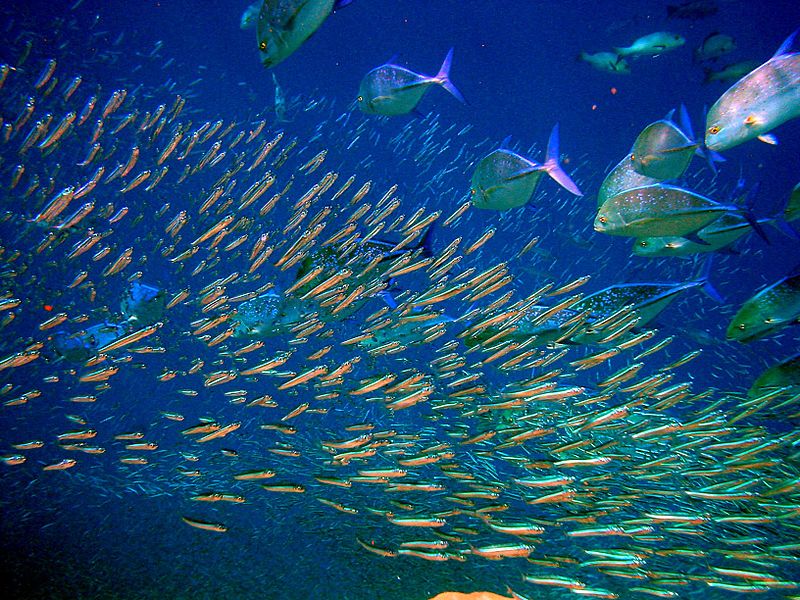
The solution, says [study researcher John] Dabiri, is to focus instead on the design of the wind farm itself, to maximize its energy-collecting efficiency at heights closer to the ground. While winds blow far less energetically at, say, 30 feet off the ground than at 100 feet, "the global wind power available 30 feet off the ground is greater than the world’s electricity usage, several times over," he says. That means that enough energy can be obtained with smaller, cheaper, less environmentally intrusive turbines--as long as they're the right turbines, arranged in the right way.
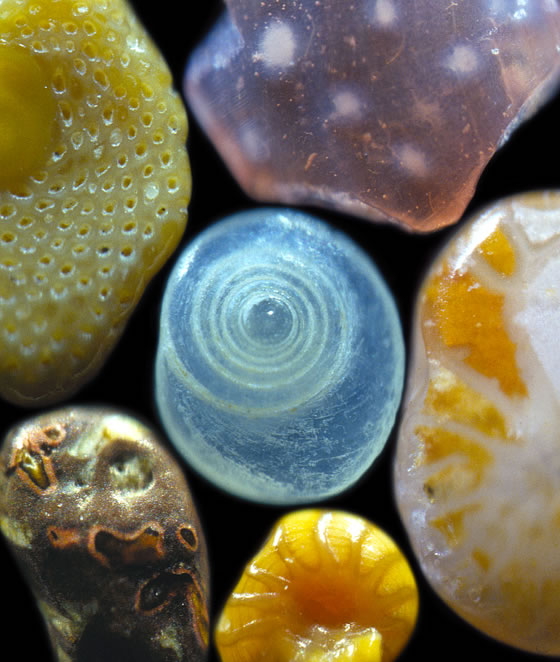


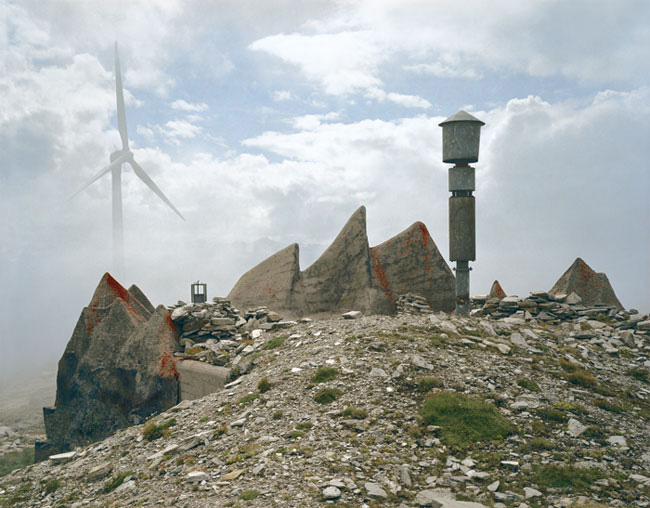
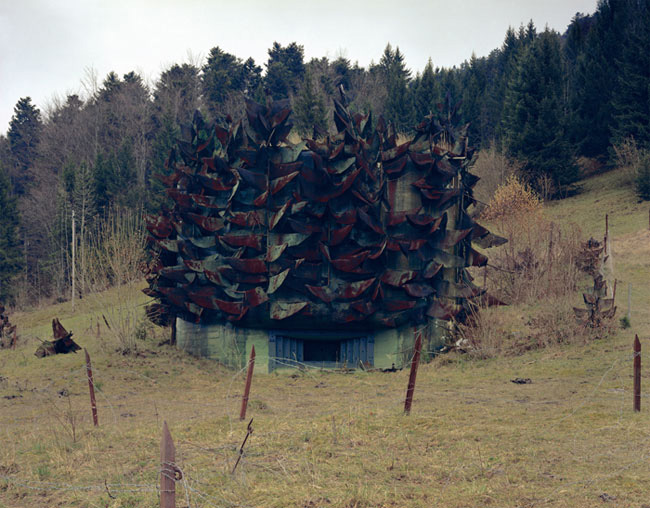
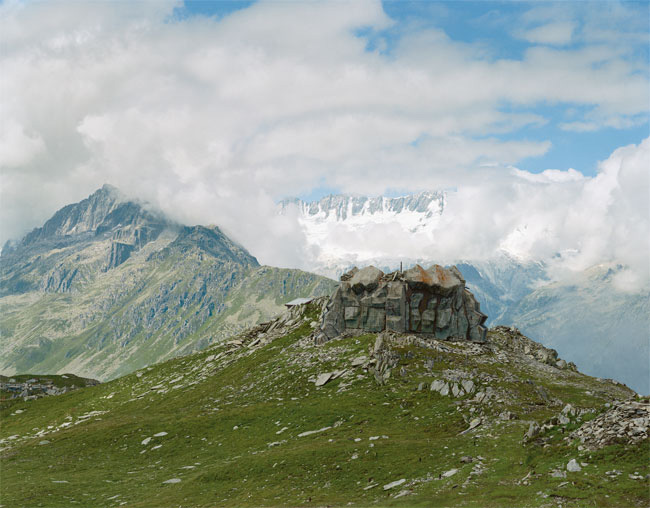

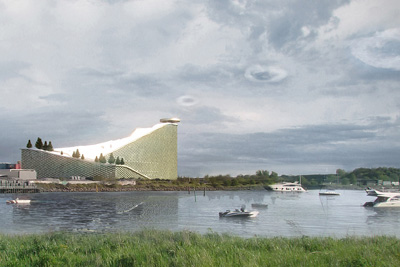



You can justify anything with statistics, of which, as Vic Reeves astutely observed: “95 per cent are made up on the spot”. Of late, we are fed a daily diet of grim figures, mountains of debt, oceans of deficit, all trotted out to justify deep and lacerating cuts to our public-spending budgets. Leaving aside the question of who got us into this mess (it certainly wasn’t me, or any of the nurses, cleaners, librarians who are carrying the can), I’d take issue with the notion that when times are tough, some things are expendable.
Take footpaths. While it doesn’t take a genius to work out that, by inclination, a Conservative-led government is not going to put matters of access ahead of matters of private property rights, there are issues here that should worry walkers. We saw what happened when the plans to sell off the nation’s forests were announced last year. This hugely misguided strategy united some of the most disparate sections of our society, from retired colonels in the Shires to eco-warriors.
Now, as the Ramblers’ chief executive Tom Franklin has pointed out, it seems from the recent Government white paper that the all-England Coast Path project may be being quietly shelved. If so, we should make our voices heard again. If one thing should exercise an island race even more than woodlands, it is the coast and the sea. It may not be putting it too strongly to call free access to the British coast a birthright.
Billy Bragg puts this primal and enduring link rather nicely. Billy lives dead alongside the South West Coast Path in Dorset. He’s often asked by those mindful of his roots in urban Barking how he feels now living in the countryside. He always replies that he doesn’t live in the countryside. He lives by the sea. There’s
a difference. He’s absolutely right. The British coast is a joy and a marvel. We are blessed in having it as our neighbour. From the austere and haunting flats of East Anglia to the pleasure palaces of Blackpool, from the rugged inlets and gull-haunted rock cathedrals of Zennor to the muddy, ribbed Humber Estuary beloved of Philip Larkin. The sea has shaped the land and us. We should not give it up without a fight.
There’ll be some who balk at the notion of walkers getting ‘too political’, feeling that we should stick to our genteel pursuits and let others make tough fiscal decisions and wield the axe. To which my reply would be unrepeatable. The roots of the Ramblers, let’s remember, are not in cream teas and stiles, but in dissent and protest. Every time I take out one of my beloved OS maps – in mountain mists, or lashed by rain on a soaking moor, or later by a crackling fireside with a warming Talisker – I think of Benny Rothman and his mates. Because these last few years, when I look at the battered map, I see great expanses of sandy yellow where previously there was antiseptic white space and ‘keep out’ signs.
The yellow shading stands for open access land; great tracts of our country once forbidden to me and you that is now open to us all. That ‘right to roam’ was won by the bravery and fortitude of many, and chief among them were the Kinder Scout Trespassers. In my new book, Hope And Glory, I make the point that the British love of nature and exploration transcends class and economic divisions. You only have to look at how climbing, for instance, made tight partners of men as socially disparate as Chris Bonington and Don Whillans to see this.
The point is that a nation is not built on GDP and fiscal prudence alone. Nationhood is forged in the character of the people and how they interact with the landscape and history of the land. I get a swell of pride when I see Japanese tourists taking pictures by the shores of Derwent Water or the slopes of Skiddaw; or when I chat to the German and Dutch tourists who throng the Cornish sections of the South West Coast Path, entranced by the savage beauty of it.
If a Big Society means anything, it is an open society: a society that welcomes those, British or not, who want to enjoy the nations’ natural joys and wonders to the full. If not, we are a small and crabbed society, one seeking to close doors and lock gates under cover of an economic darkness. We should not let this happen.
Stuart Maconie’s Hope And Glory is published by Ebury Press

After the initial shock of last year's Gulf oil disaster passed, it quickly became apparent that the oil had somehow disappeared--on the surface, at least. Dispersants helped break up some of the larger plumes, sure, but that doesn't entirely explain why the surface oil slick in the Gulf seemed to disappear just three weeks after the disaster. Researchers from the Woods Hole Oceanographic Institute think they have the answer: hungry bacterial microbes.
Scientists have known for some time that certain bacteria enjoy a good meal made out of oil. But after studying samples from the slick and its surrounding waters, the Woods Hole researchers discovered that bacterial microbes inside the slick were devouring the oil a whopping five times faster than microbes outside the Gulf slick. And strangely enough, there was no increase in microbes inside the slick, leaving the researchers to wonder what the microbes did with all the excess energy gained from chowing down on oil (you would except more microbes to breed as a result of all the available oil).
The researchers were also surprised that the microbes consumed so much oil in the first place, since necessary nutrients for the oil-eaters--like phosphorous and nitrogen--were lacking in the oil slick and surrounding waters.
The scientists' big fear, of course, is that oil companies will take this information and use it to allay fears about future oil disasters ("We can spill all the oil we want into the ocean because it's just feeding the microbes"). But Terry Hazen, a microbial ecologist with the Lawrence Berkeley National Laboratory, questioned just how well these microbes break down oil in an interview last year: "Now, did they degrade every single component of the oil? It's doubtful. And there could be some long-term effects from some of these very, very low concentrations. We don't know. That remains to be seen."
The Woods Hole researchers also explain that molecules from the broken-down oil could still find its way into food webs, both offshore and in shoreline areas. So while the oil may appear to be gone, little bits of it could have toxic consequences.
Still, it's a comforting thought and a sure source for innovation--if bacterial microbes can at least partially help clean up our massive man-made disasters, what can we learn about how to speed up, mimic, or augment that process in preparation for the next big oil spill?
[Image: Flickr user faceless b]
Reach Ariel Schwartz via Twitter or email.EL SCHWARTZMon Aug 1, 2011

For the last five or six years, Norway has been investing in a new adventure industry, seeding infrastructure and supporting fledgling outfitters, and sprucing up its already beautiful lands.
In 2005, Norway began building “national tourist routes” along its particularly scenic areas, laying down quality standards for the roads to retain this status, and constructing more than 100 rest areas. But these aren’t your typical grungy, institutionalized pullouts: Norway commissioned architects to design structures, ramps, porches, overhangs, and other very cool and often subtle enhancements to the landscape. It’s your Kodak moment delivered with thought, consideration, and whimsy.



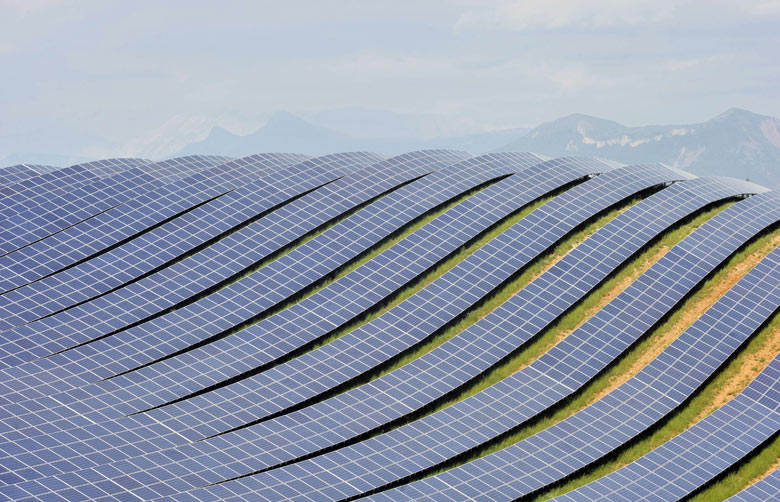
 This piece, By the peerless Douglas Adams first appeared in the News Review section of The Sunday Times on August 29th 1999. Over 12 years ago. And it's still bang on. Nothing to do with the beach, or green issues - it's just about the world.
This piece, By the peerless Douglas Adams first appeared in the News Review section of The Sunday Times on August 29th 1999. Over 12 years ago. And it's still bang on. Nothing to do with the beach, or green issues - it's just about the world.A couple of years or so ago I was a guest on Start The Week, and I was authoritatively informed by a very distinguished journalist that the whole Internet thing was just a silly fad like ham radio in the fifties, and that if I thought any different I was really a bit naïve. It is a very British trait – natural, perhaps, for a country which has lost an empire and found Mr Blobby – to be so suspicious of change.
But the change is real. I don’t think anybody would argue now that the Internet isn’t becoming a major factor in our lives. However, it’s very new to us. Newsreaders still feel it is worth a special and rather worrying mention if, for instance, a crime was planned by people ‘over the Internet.’ They don’t bother to mention when criminals use the telephone or the M4, or discuss their dastardly plans ‘over a cup of tea,’ though each of these was new and controversial in their day.
Then there’s the peculiar way in which certain BBC presenters and journalists (yes, Humphrys Snr., I’m looking at you) pronounce internet addresses. It goes ‘www DOT … bbc DOT… co DOT… uk SLASH… today SLASH…’ etc., and carries the implication that they have no idea what any of this new-fangled stuff is about, but that you lot out there will probably know what it means.
I suppose earlier generations had to sit through all this huffing and puffing with the invention of television, the phone, cinema, radio, the car, the bicycle, printing, the wheel and so on, but you would think we would learn the way these things work, which is this:
1) everything that’s already in the world when you’re born is just normal;
2) anything that gets invented between then and before you turn thirty is incredibly exciting and creative and with any luck you can make a career out of it;
3) anything that gets invented after you’re thirty is against the natural order of things and the beginning of the end of civilisation as we know it until it’s been around for about ten years when it gradually turns out to be alright really.
Apply this list to movies, rock music, word processors and mobile phones to work out how old you are.
This subjective view plays odd tricks on us, of course. For instance, ‘interactivity’ is one of those neologisms that Mr Humphrys likes to dangle between a pair of verbal tweezers, but the reason we suddenly need such a word is that during this century we have for the first time been dominated by non-interactive forms of entertainment: cinema, radio, recorded music and television. Before they came along all entertainment was interactive: theatre, music, sport – the performers and audience were there together, and even a respectfully silent audience exerted a powerful shaping presence on the unfolding of whatever drama they were there for. We didn’t need a special word for interactivity in the same way that we don’t (yet) need a special word for people with only one head.
I expect that history will show ‘normal’ mainstream twentieth century media to be the aberration in all this. ‘Please, miss, you mean they could only just sit there and watch? They couldn’t do anything? Didn’t everybody feel terribly isolated or alienated or ignored?’
‘Yes, child, that’s why they all went mad. Before the Restoration.’
‘What was the Restoration again, please, miss?’
‘The end of the twentieth century, child. When we started to get interactivity back.’
Because the Internet is so new we still don’t really understand what it is. We mistake it for a type of publishing or broadcasting, because that’s what we’re used to. So people complain that there’s a lot of rubbish online, or that it’s dominated by Americans, or that you can’t necessarily trust what you read on the web. Imagine trying to apply any of those criticisms to what you hear on the telephone. Of course you can’t ‘trust’ what people tell you on the web anymore than you can ‘trust’ what people tell you on megaphones, postcards or in restaurants. Working out the social politics of who you can trust and why is, quite literally, what a very large part of our brain has evolved to do. For some batty reason we turn off this natural scepticism when we see things in any medium which require a lot of work or resources to work in, or in which we can’t easily answer back – like newspapers, television or granite. Hence ‘carved in stone.’ What should concern us is not that we can’t take what we read on the internet on trust – of course you can’t, it’s just people talking – but that we ever got into the dangerous habit of believing what we read in the newspapers or saw on the TV – a mistake that no one who has met an actual journalist would ever make. One of the most important things you learn from the internet is that there is no ‘them’ out there. It’s just an awful lot of ‘us’.
Of course, there’s a great deal wrong with the Internet. For one thing, only a minute proportion of the world’s population is so far connected. I recently heard some pundit on the radio arguing that the internet would always be just another unbridgeable gulf between the rich and the poor for the following reasons – that computers would always be expensive in themselves, that you had to buy lots of extras like modems, and you had to keep upgrading your software. The list sounds impressive but doesn’t stand up to a moment’s scrutiny. The cost of powerful computers, which used to be around the level of jet aircraft, is now down amongst the colour television sets and still dropping like a stone. Modems these days are mostly built-in, and standalone models have become such cheap commodities that companies, like Hayes, whose sole business was manufacturing them are beginning to go bust.. Internet software from Microsoft or Netscape is famously free. Phone charges in the UK are still high but dropping. In the US local calls are free. In other words the cost of connection is rapidly approaching zero, and for a very simple reason: the value of the web increases with every single additional person who joins it. It’s in everybody’s interest for costs to keep dropping closer and closer to nothing until every last person on the planet is connected.
Another problem with the net is that it’s still ‘technology’, and ‘technology’, as the computer scientist Bran Ferren memorably defined it, is ‘stuff that doesn’t work yet.’ We no longer think of chairs as technology, we just think of them as chairs. But there was a time when we hadn’t worked out how many legs chairs should have, how tall they should be, and they would often ‘crash’ when we tried to use them. Before long, computers will be as trivial and plentiful as chairs (and a couple of decades or so after that, as sheets of paper or grains of sand) and we will cease to be aware of the things. In fact I’m sure we will look back on this last decade and wonder how we could ever have mistaken what we were doing with them for ‘productivity.’
But the biggest problem is that we are still the first generation of users, and for all that we may have invented the net, we still don’t really get it. In ‘The Language Instinct’, Stephen Pinker explains the generational difference between pidgin and creole languages. A pidgin language is what you get when you put together a bunch of people – typically slaves – who have already grown up with their own language but don’t know each others’. They manage to cobble together a rough and ready lingo made up of bits of each. It lets them get on with things, but has almost no grammatical structure at all.
However, the first generation of children born to the community takes these fractured lumps of language and transforms them into something new, with a rich and organic grammar and vocabulary, which is what we call a Creole. Grammar is just a natural function of children’s brains, and they apply it to whatever they find.
The same thing is happening in communication technology. Most of us are stumbling along in a kind of pidgin version of it, squinting myopically at things the size of fridges on our desks, not quite understanding where email goes, and cursing at the beeps of mobile phones. Our children, however, are doing something completely different. Risto Linturi, research fellow of the Helsinki Telephone Corporation, quoted in Wired magazine, describes the extraordinary behaviour kids in the streets of Helsinki, all carrying cellphones with messaging capabilities. They are not exchanging important business information, they’re just chattering, staying in touch. "We are herd animals," he says. "These kids are connected to their herd – they always know where it’s moving." Pervasive wireless communication, he believes will "bring us back to behaviour patterns that were natural to us and destroy behaviour patterns that were brought about by the limitations of technology."
We are natural villagers. For most of mankind’s history we have lived in very small communities in which we knew everybody and everybody knew us. But gradually there grew to be far too many of us, and our communities became too large and disparate for us to be able to feel a part of them, and our technologies were unequal to the task of drawing us together. But that is changing.
Interactivity. Many-to-many communications. Pervasive networking. These are cumbersome new terms for elements in our lives so fundamental that, before we lost them, we didn’t even know to have names for them.
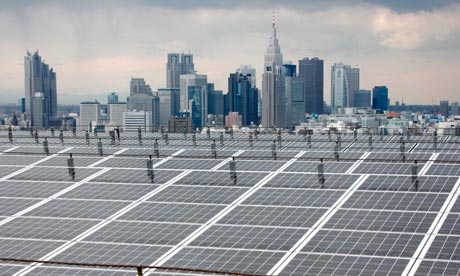
Japan to scrap nuclear power for renewables and conservation
The prime minister says Japan must 'start from scratch' and Japan will scrap a plan to obtain half of its electricity from nuclear powerand will instead promote renewable energy as a result of its nuclear crisis, the prime minister said Tuesday. Naoto Kan said Japan needs to "start from scratch" on its long-termenergy policy after the Fukushima Dai-ichi nuclear power plant was heavily damaged by a 11 March earthquake and tsunami and began leaking radiation.
Japan's nuclear plants supplied about 30% of the country's electricity, and the government had planned to raise that to 50%.
Kan told a news conference that nuclear and fossil fuel used to be the pillars of Japanese energy policy but now it will add two more – renewable energy such as solar, wind and biomass, and an increased focus on conservation.
"We will thoroughly ensure safety for nuclear power generation and make efforts to further promote renewable energy," an area where Japan has lagged behind Europe and the US, he said.
On Monday a landmark report by the UN's climate science body, the IPCC, said that renewable energy could account for 80% of the world's energy supply by 2050 – but only if governments pursue the right policies.
Kan also said he would take a pay cut beginning in June until the Fukushima nuclear crisis is resolved to take responsibility as part of the government that has promoted nuclear energy. He didn't specify how much of a pay cut he would take.
The operator of the stricken power plant, Tokyo Electric Power Co, has been struggling for nearly two months to restore critical cooling systems that were knocked out by the disaster. Some 80,000 people living within a 12-mile radius of the plant were evacuated from their homes on 12 March, with many living in gymnasiums.
On Tuesday, about 100 evacuees were allowed into that exclusion zone briefly to gather belongings from their homes.
The excursion marked the first time the government has felt confident enough in the safety of the area to allow even short trips there. Residents have been pushing hard for weeks for permission to check up on their homes.
The evacuees boarded chartered government buses for the two-hour visit.
They were provided with protective suits, goggles and face masks to wear while in the zone, and were issued plastic bags to put their belongings in. They were also given dosimeters to monitor radiation levels and walkie-talkies.
All were to be screened for radiation contamination after leaving the zone.
More visits are planned, but residents fear they may never be able to return for good.
Many had been secretly sneaking back into the zone during the day, but the government – concerned over safety and the possibility of theft – began enforcing stricter roadblocks and imposing fines on 22 April.
The official visits were seen as a compromise that took both safety and the wishes of the residents into consideration.
The government and TEPCO in April projected that bringing the plant to a cold shutdown could take six to nine months and residents might be able to return to resume their lives. But they admit that timing is a best-case scenario.
On Monday, another utility, Chubu Electric Power Co, agreed to shutter three reactors at a coastal power plant while it builds a seawall and improves other tsunami defenses there.
Kan requested the temporary shutdown at the Hamaoka plant amid predictions an earthquake of magnitude 8.0 or higher could strike the central Japanese region within 30 years. The government's decision came after evaluating Japan's 54 reactors for quake and tsunami vulnerability after the 11 March disasters. The Hamaoka facility sits above a major fault line and has long been considered Japan's riskiest nuclear power plant.
Kan said Japan will have to compile Japan's new energy policy in a report for submission to the International Atomic Energy Agency in June. He didn't give any numerical estimates for each source of energy in the new policy.abandon its plan to obtain half its energy from atomic power
With new bathing quality standards looming (2015), some local authorities around the UK are attempting to de-designate bathing waters. Once de-designated, bathing waters can effectively be forgotten about, leaving the water quality to at best stagnate, and at worse deteriorate into an altogether more unpleasant environment for surfers, waveriders and bathers. Local authorities are trying to de-designate beaches to avoid posting warnings when water quality is deemed to pose a health risk.
SAS use current legislation to drive environmental improvements for designated bathing waters. The Environment Agency and water companies around the country prioritise designated bathing waters that are struggling to meet minimum bathing water standards to deliver improvements.
De-designating a beach will dramatically devalue the coastal environment and reduce the multi-agency protection given to the area. Environmental standards across the board, from water quality to beach cleanliness will fall and investment will be moved to designated bathing waters elsewhere. Local authorities are actively trying to hide the problem rather than make efforts to solve it, letting down their whole community.
On de-designation, Roger Jacob, clerk to Instow has said “It’s like the Jaws effect, putting people off going to the beach.” The main similarity with the Jaws film is the local authorities withholding important information from beach users. And, just when we thought it was safe to go back in the water!
Ilfracombe’s District Councillor Mike Edmunds said ““The worst thing that could happen is if the beach failed… because signs saying ‘poor quality’ would be detrimental to the tourist area… It’s important that we don’t have signs saying ‘poor water quality’ at Wildersmouth, especially in light of the magnificent new design proposals for the seafront. We don’t want anything to detract from that.”
They are missing the point of the signs; it’s not to scare away tourists. The problem is not the signs, it’s the water quality, which is something on which action can be taken whilst designated The signs are to warn that bathing in the sea has been deemed to be a risk to public health. SAS believe that, if a local authority knowingly withholds this important information it is acting irresponsibly. They should have a duty of care to their community and should want to allow the public to make informed decisions about how and when they use the sea before they expose themselves to potentially harmful pathogens.
On the 22nd of March 2011 SAS formally requested that DEFRA inform SAS as soon as a local authority apply for de-designation. In the DEFRA guidance it clearly states “bathing waters will not be de-designated because water quality has failed the current Bathing Water Directive’s mandatory standards or because it is projected to be classified as poor under the revised Bathing Water Directive.:”
SAS will continue to be vigilant on this issue and oppose any de-designation in lieu of water quality improvements at designated bathing waters.

"It's about the future … natural disasters, sea levels, ice melting, fires … people have to understand that's down to humans. Governments need to let the public know how we can become energy self-sufficient." From an environmental campaigner, that statement would hardly raise an eyebrow – but from a former captain of the England football team, it sounds altogether different. We've become used to musicians, film stars and celebrity chefs flaunting their eco-credentials, but green-minded sports stars are still few and far between.
Rio Ferdinand, the Manchester United centre-back who grew up on a south London council estate, seems very aware of the need for a different type of environmental messenger. Having recently become more interested in green issues, he's planning not only to reduce his own impact – and "to make sure my kids are aware" – but also to inspire regular people to do the same. "It all comes down to education. If people aren't educated, they're not going to get behind something. They need to understand it before they take a stand."
Ferdinand's green awakening started when energy company E.ON signed him up to be an advocate for their Energy Fit programme. The scheme organises competitions for local sports clubs to get energy-saving overhauls, and the community element appealed to Ferdinand. I met him in the clubhouse of century-old amateur team Alexandra Palace FC. Like Ferdinand's own home, the building has just had an "energy fitness" audit, and after the interview one of the club's staff proudly shows me their new light sensors and extra thick loft insulation.
Chatting in an upstairs office hardly big enough to accommodate his expansive frame, Ferdinand makes it clear that he's not about to become a green fanatic. "I'm not going to change my whole lifestyle overnight," he says. "I'm starting an educational journey." Judging from his passing references to unleaded petrol and the ozone hole, it seems his last period of eco-education was the 1980s. He doesn't mention climate change until prompted, but he's in no doubt that the stakes are high. When asked what's at risk if we don't look after the environment, he answers emphatically: "Trees, animals, humans … everything. Everything's endangered."
I ask Ferdinand whether he thinks the sports world – players, clubs and fans – have been slow to catch onto green issues. "It's not about that group," he replies quickly. "It's a social issue, and it's not been high on the agenda. It's not an ignorance in the sports sector but in society in general. Any walk of life is the same." But are there any other players who have taken green lifestyle steps? Ferdinand namechecks Gary Neville and David James, both of whom – like many other celebs – have dabbled in low-carbon vehicles. "Gazza's got a Prius and David James had a car powered by rapeseed oil."
By contrast, Ferdinand has started out by focusing on his home – which I rather admire, because while domestic energy efficiency is far less sexy than eco cars, it's just as important. Ferdinand, for one, seems quite fired up about it. "Little things like moving your sofa from in front of a radiator, changing lightbulbs. You get a better feeling about yourself, and the little things add up. It's like, how many pennies make a pound?"
Among many other things, Ferdinand's home energy auditors advised him to turn the thermostat down ("we just use the duvet more") and switch off appliances properly, which Ferdinand has found a way to get the kids to do ("we make it like a game – who can turn off all the switches before bed"). Another recommendation was to move the freezer, which was next to a radiator in the hottest room in the house, making it work much harder to stay cold. That's another good example of the need for education, Ferdinand says, recalling with raised eyebrows exactly the same issue in his childhood home. "I remember in my flat on the council estate, the radiator was behind the fridge. Basic things like that – you just don't see them until you're educated in the field."
What about bigger steps? High-specification insulation? Solar panels? "Yeah", he says – but those are jobs for the new-build he'll be moving into soon. "We're talking to the architects about that." In the meantime, he's sticking with small changes. The one that seems to have caught his attention the most is putting the right amount of water in the kettle. "At first I thought, how can that make a difference? But when you think about it, it's obvious." Has he now become super-vigilant on that front? "Yeah, man, if someone fills the kettle up they're gonna get …" he says, miming the punishment he has in mind.
Ferdinand currently has a Jaguar, though gone are the days when he thought of cars as glamorous. "These days I've got kids and it's just about getting them from A to B." Would he ever switch to an electric car? "Yeah, definitely." We agree that, at well over six feet tall, he wouldn't fit in a G-Wiz or some other supermini, but how about a Tesla or some such? "Not yet – all the price tags on them are crazy, aren't they? I saw one come up the other day for £2m." If Ferdinand can't afford a decent electric car then we have quite a long way to go.
In the meantime, how about eco driving? Having read that when Ferdinand was younger he lost his licence on multiple occasions for speeding, I can't help asking how he'd feel about driving more slowly to increase engine efficiency. "With maturity I started doing that anyway, so I should be already in that bracket," he says.
For an international sports star, though, flying is more problematic. "We travel week in week out. We're in France one week, Spain the next. How do you get around that? I'm yet to be told – unless you can enlighten me?" The only thing I can suggest is we have fewer of them. So now that Ferdinand is thinking about carbon footprints, how does he feel about the World Cup, say, or the Olympics, and the massive amounts of energy they consume. "I don't know – it's hard to say. It's difficult. Are you going to stop people being happy and going to big events because of the carbon footprint? Or should we make them more environmentally friendly so you're doing as little damage as possible? There's not really a right answer."
He doesn't just stop at the car and the house, either. "We grow organic food in the garden," he says, "we've got a little vegetable garden with a greenhouse where we grow tomatoes, lettuce, peppers and strawberries." Any tips for other green-fingered types? "Tomatoes are the easiest. Green beans as well. Just don't leave them out there too long or the kids start eating them." And the strawberries? "Nah. Strawberries are a no-go. Too hard!" What about the rest of his diet? Would he consider eating less meat and dairy, for instance? He looks a little bit pained and says he'd need to "get more knowledge" before thinking seriously about that. He adds, somewhat sadly, "I love meat, man."
No doubt Ferdinand's green efforts will be dismissed by some as tokenism or even greenwash. Here's a celebrity – and one who almost certainly has a fairly huge carbon footprint – focusing on little lifestyle changes rather than bigger ones, and doing so under the banner of an energy company that was until recently considered the UK's leading environmental villain. But that would, I think, be to miss the point. Popular concern about an issue can help bring about deeper political change – and Ferdinand surely has a much better chance than traditional environment campaigners of seeding that concern in as-yet unreached parts of society.
But should he be taking up a political stance on green issues as well as just tweaking his lifestyle? Ferdinand's not so sure. "That's a long way down the line for me." Without learning more, he say, taking too much of a political angle "would be just hanging myself out to dry". Returning to his favourite theme, he adds, "I think the government are trying to make a concerted effort, but it all boils down to education. People need to understand it … it has to start more grassroots." But should the government make policy changes to ensure that everyone is greener? "Yes, definitely. It's the government's duty to do that. The environment and the world we live in is changing dramatically after disregard over the years."